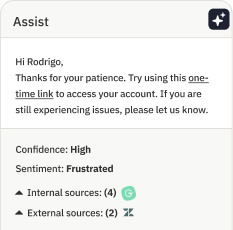Call Center FTE Calculator - Assembled

There are a lot of major challenges that come with running a call center. One of the challenges that managers will have to address involves making sure that enough full-time employees are working. This is a delicate balance. Of course, call centers need to make sure that they have enough people working to prevent their customers from waiting for an extended amount of time. On the other hand, if call centers over staff, they are going to end up paying a lot of agents to sit there and do nothing. How can call center managers make sure they have the right number of people working? That is where a calculator can be used to know how many FTE’s (full-time employees) are needed to operate the call center.
There are lots of tools that are available to companies that are trying to figure out exactly how many people they should have working at a given time. In general, a lot of the methodology is going to be the same. Companies that are seasonal in nature are going to have to take a look back at their historical data. During the same time last year, what was the average number of calls that came into the call center during a given shift? Then, based on the growth of the company, it is possible to extrapolate an estimate of the number of calls that are going to come in during the same time this year. That way, the company will be able to figure out exactly how many agents they need to have work based on the average number of calls that an agent is able to handle during his or her shift.
Even though this may sound like a straightforward calculation, it can take a while for people to come up with the numbers that they are doing these calculations by hand. That is where advanced tools, such as the FTE calculator, are helpful. It is critical for managers to understand the tools they have at their disposal so they can make sure they use them properly.
Call Center Staffing Model
One of the ways that companies can figure out exactly how many people they need to work at a given time is to use a call center staffing model. There are lots of options available when it comes to a call center staffing model. For example, a lot of companies decide to use a call center staffing model Excel. There are plenty of call center staffing model Excel template options that companies can use. By filling in the cells as they go and using advanced formulas, Excel can spit out exactly how many people the company needs working at a given time.
On the other hand, it is also important for everyone to remember that Excel was not specifically designed to help call centers to figure out exactly how many people they need to have working. Therefore, it is also a good idea to take a look at some of the advanced tools that are out there that provide companies with access to more call center staffing model options. For example, call centers are responsible for handling a wide variety of phone calls. Phone calls may require different amounts of time depending on the nature of the call. This could impact the number of calls that a company is able to handle in a single shift. As a result, they may need to use a different staffing model.
Depending on the industry in which a company is operating, it is important to take a look at their exact needs and try to find software programs that are able to meet them. When companies take the time to use the right call center staffing model, they place themselves in the best position possible to meet the needs of their customers. As a result, they will be able to grow and expand their reach thanks to the efficiency of the call center itself, resulting in a better experience for their customers and for agents.
{{cta-card}}
Call Center Staffing Ratios
When it comes to scheduling call center staffing, one of the most important issues that companies need to consider is the call center staffing ratios. Specifically, this ratio has to do with exactly how many agents are required to work in a call center when compared to the number of managers who are present. Remember that if the agent is not able to address the call on the first attempt, then a phone call is going to be escalated to the manager. Just as companies need to make sure they have enough agents to handle calls as they come in, companies also need to make sure they have enough managers to handle calls as they are escalated.
In general, call centers need to shoot for a ratio of somewhere between 8:1 and 15:1. If companies try to save money by reducing the number of managers who are present, then it is going to take them longer to resolve phone calls. This will reduce the first call resolution percentage, which may impact the loyalty of their customers. Of course, instead of simply guessing at this number, it is important for businesses to take a methodological approach when they are discussing their call center staffing ratios.
It is critical for companies to take a look at their historical data. Then, they should take a look at what percentage of their calls are escalated. Using this information, they can figure out exactly how many managers are going to require to handle phone call escalations during a given shift. Then, they can make sure that they have enough managers to handle these phone call escalations while also handling other managerial duties. That way, businesses will be able to make sure they hit the right call center staffing ratios based on the needs of their customers, employees, and managers.
Erlang C Table
One of the most important tools that call center managers will need to use is something called an Erlang C Table. This table is designed to use the Erlang C formula and is helpful for calculating the exact number of agents that a call center needs in a given call center. Given a specific service level and the number of calls that are coming in, it is possible for people to use this table to calculate how many agents they are going to require. This is a deviation from another formula called the Poisson formula, but it uses a specific, special case that allows it to be tailored to call centers.
The good news is that there are lots of ways that people can use this calculator. For example, there is an Erlang calculator Excel template that companies can use if they are still using Microsoft Excel. There is also a general Erlang calculator tool that business leaders can use to help them with their call center needs. For managers who need to run this calculation in reverse, there is even a reverse Erlang calculator they can use as well as an Erlang calculator for outbound calls. Because this is one of the most versatile tools available, it is important for business leaders to make sure they use this calculator appropriately. That way, they can place their agents and managers in the best position possible to be successful.

Outbound Call Center Staffing Calculator
There are lots of businesses that make use of outbound call centers. In contrast to inbound call centers, where companies are handling calls that are coming in from outside customers, an outbound call center is usually run by sales teams and marketing teams. Therefore, the calculation when it comes to an outbound call center staffing model is going to be a bit different.
Even though it is important for managers to keep an eye on the outbound call center staffing calculator and understand how long the average call takes to be completed, managers in an outbound call center are going to be more focused on something called diminishing returns. Even though it is possible for companies to stuff more outbound call center agents into a single call center, there's going to come a point when the conversion rate starts to drop. Therefore, if using an outbound FTE calculator in Excel, it is important for call center agents to figure out what the optimal number of specialists is in an outbound call center. That way, companies can make sure they are getting the most out of their call centers without paying specialists for diminishing returns.
Inbound Call Center Staffing Calculator
For those who are wondering how to calculate the number of agents required to staff a call center, this is going to be a little bit different for an inbound call center. When it comes to how to calculate the headcount required, there is a lot of information that goes into an inbound call center staffing calculator. For example, companies need to figure out how many phone calls are going to arrive at the call center during a given shift. Then, companies need to figure out how many agents are required to field all of those phone calls.
After this, businesses also need to think about how many managers are going to be required to field calls that are escalated to a higher level. Finally, it is a good idea to look at seasonal trends, particularly for businesses whose phone calls tend to wax and wane during the course of the year. By optimizing the number of agents who are working in an inbound call center, businesses ensure that their call centers run as efficiently as possible. Use this inbound call center calculator to run your call center.




